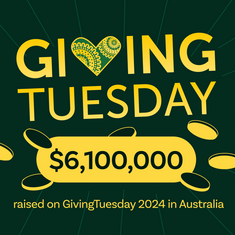
Learn how to strategise for your yearly fundraising plan by identifying your fundraising sources, donors, and core mission statement.
In a perfect world, your nonprofit would never have to worry about raising money to achieve its goals. While we don’t live in that world, developing a fundraising plan makes raising money easier.
Fundraising plans can achieve so much more than just hitting your financial goal. They allow you to see your big picture and help you draw a roadmap for your annual fundraising strategy, from where you are to where you want to go.
A master fundraising plan helps you better identify who your potential donors are and what marketing tactics and fundraising techniques attract them. You can customise fundraising campaigns that speak to them, while also energising your mission.
And better yet, Raisely's platform makes achieving each part of your fundraising plan even easier! Here’s how to create your annual fundraising plan.
Focus on Your Mission
Running a nonprofit is hard! You’re managing multiple fundraising events and activities throughout the year, trying to attract new donors while retaining your current donors, looking for volunteers, and galvanising board members — and sometimes you have to do all that before lunch!
Every organisation has a mission. What is your nonprofit‘s purpose? Why does it exist? Who are the potential donors that’ll be drawn to your cause, and how do you reach them?
When you wear several hats and try to accomplish multiple tasks, it’s easy to lose sight of your messaging — your why.
Whether your nonprofit is a wildlife refuge or provides digital skills training to underserved communities, your mission statement needs to be everywhere. It needs to be front and centre on your website, on all your social media platforms, in every piece of direct mail or email, and at the core of every fundraiser you host.
Your nonprofit’s mission is the reason people work with you, and why donors and stakeholders are compelled to donate and support your cause, and continue to donate at fundraising events throughout the year. Without a clear mission statement, you risk losing steam and supporters.
If you ever feel like you‘re struggling, revisit your mission statement, and remind yourself why your organisation exists in the first place.
Identify Your Core Objectives
When creating a fundraising plan, the mission is your why, and your objectives are your what.
What are your core objectives and how do they help you achieve your mission?
For example, let’s say your nonprofit’s mission is to provide long-term housing, training, and job placement for young women ageing out of foster care. What do you need to do to accomplish that goal? You’ll need:
- Housing for however many young women you’re helping
- Money for food and clothing
- Funds for furniture and appliances
- Money for utilities and other bills
- Teachers, instructors, and staff members
- Physicians, mental health professionals, and additional resources
- And much more
Your fundraising goals need to account for everything you need.
When you’re devising a fundraising strategy, consider all your nonprofit’s needs. Each of these bullet points could be its own fundraising goal. It may seem daunting, but thinking of it this way is actually a good thing. If you know how much these items will cost, you have set goals for your fundraising efforts!
Next, think of fundraising activities directly related to your mission, and how to get your donor base involved.
Put Your Fundraising Plan in Motion
Your mission and objectives are defined by your entire year’s worth of activities, not just one fundraising campaign. Now that you know your mission and objectives, how will you meet and exceed your fundraising benchmarks?
There are several factors to consider:
Who Are Your Donors and How Do You Reach Them?
Who are the people most inclined to donate to your cause? What are they like and how do you get a hold of them? Identifying or creating donor personas will make your fundraising planning go much smoother.
Let’s say your cause is raising funds for breast cancer research. You’re likely to inspire major gifts and attract new donors during Breast Cancer Awareness Month, but that’s only one month out of the calendar year. What about the rest?
Highlight cancer survivors on your website and social media, and apply for grants using their stories as testimonials for your cause. You can also plan in-person and virtual events throughout the year with your mission of supporting research and saving lives.
Set clear objectives, such as hitting quarterly fundraising milestones or raising money for a specific cancer research centre. Create a capital campaign Breast Cancer Awareness Month with the goal of beating last year’s donations.
Also, encourage recurring donations throughout the year so you have a steady revenue stream to work with.
When building your annual fundraising calendar, plan multiple events that attract various donor pools, whether they’re major donors or not.
You’re unlikely to get anyone under 30 to answer your phone call, but you can get their attention on social media. Peer-to-peer fundraising campaigns have erupted in popularity recently. In 2021, digital peer-to-peer fundraisers generated over $154 million for 44 different charities, a 30% increase from 2020.
Through peer fundraising campaigns, you and your followers can create donation pages for your cause, which they can then share with their followers.
You should never underestimate the power of individual donors, even if they don’t have much to give.
For example, many younger donors may lack the funds of more affluent donors, but if they’re passionate about your cause, they can become ambassadors and attract a number of new donors for you. Also, they may become recurring donors, and give more to your cause as their disposable income increases.
Email a simple survey to your donor base and ask them what types of fundraisers they enjoy. Some will prefer virtual campaigns, while others may be drawn to in-person fundraising. Any info you get from them will help you with your annual fundraising planning.
Identify Your Past and Present Data
Check out the data you collected from last year and previous years.
- What types of successful fundraising events did you create?
- How successful were they and in what ways?
- Are they worth doing again and can they be more successful?
The measurable metrics you gain from this data, like funds raised, donor retention, and what types of donors are drawn to which events, will help you devise next year’s fundraising plan.
Who Do You Need on Your Team?
In addition to donor acquisition, you need staff and volunteers. You’ll likely need some staff for all your annual fundraising efforts, and many of them will have talents in specific areas, such as marketing, copywriting, website and donation page management, technical assistance, etc.
Since you’ll be fundraising across multiple channels, events, and reaching donors of many demographics, you’ll need your team to work on events that highlight their skill sets, and find additional paid or unpaid help when necessary.
Streamline With Raisely
Remember that part about nonprofit managers having to do a million different things all at once?
Raisely can simplify your role by making it easier to create personalised, fully-branded campaign websites, thanks to free templates. We also provide an easy-to-use admin panel that helps you keep track of the status of all your events.
With Raisely, you can customise your donation forms, milestone badges, and progress bars with our pre-made content blocks. You can also collect other important information with our built-in CRM, or integrate it with your preferred CRM. You can even create custom reports, manage event registration, and set up message triggers for different moments of the campaign.
Best of all? Our entire fundraising suite (excluding a few add-ons) is free!
Are you ready to create your fiscal year’s fundraising plan? Rally around your mission, identify your core objectives, and then sign up with Raisely to grow your cause.




